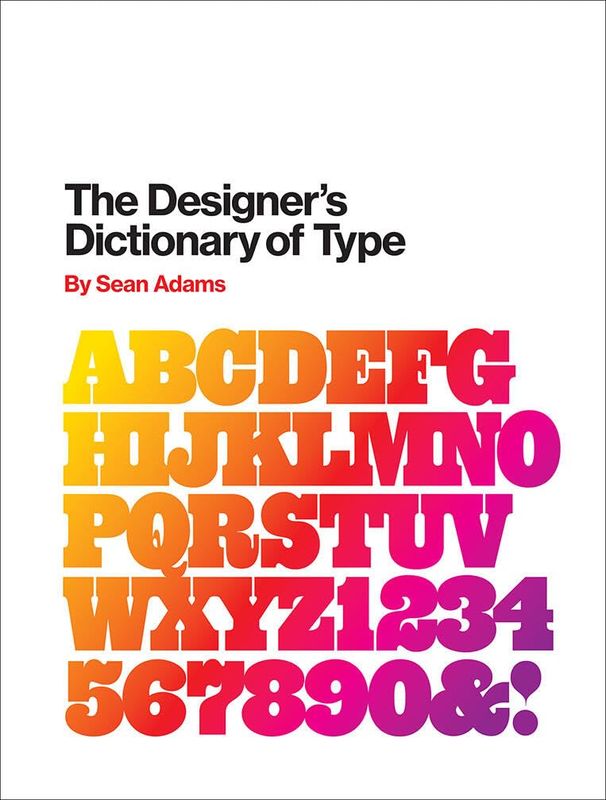Book Review of Visual Explanations
Considers the effective presentation of information by graphic means.
Book Overview of Visual Explanations
About the Book Author
Edward R. Tufte
Edward R. Tufte is an esteemed statistician, professor emeritus of political science, statistics, and computer science at Yale University, and a pioneer in the fields of information design and data visualization. He is best known for his influential books, including 'The Visual Display of Quantitative Information', 'Envisioning Information', 'Visual Explanations', and 'Beautiful Evidence', which emphasize the importance of clarity and aesthetics in presenting complex data. Tufte's writing style is characterized by precision and an emphasis on visual elements, advocating for the effective communication of data through well-designed graphics and charts.
Book Details
Key information about the book.
- Authors
- Edward R. Tufte
- Published
- January 1997
- Publisher
- N/A
- ISBN
- N/A
- Language
- English
- Pages
- 168
- Genres
- Graphic DesignVisual ArtsDesign
Purchase Options
Support local bookstores: BookShop gives a portion of each sale to independent bookshops!
Similar books you might like →
Identity Designed Book Summary
In 'Identity Designed,' David Airey takes readers on a captivating journey through the art and science of branding. This visually stunning book showcases a rich collection of global identities, revealing the strategies behind their creation. Airey delves into the psychological impact of design, urging readers to think deeply about how branding shapes perceptions. With insightful case studies and expert commentary, it sparks curiosity about the essence of identity in modern culture. Perfect for designers and entrepreneurs alike, this book invites you to explore the power of visual storytelling in building a brand.
Typography Essentials Revised and Updated Book Summary
In 'Typography Essentials Revised and Updated', Ina Saltz unveils the fundamental principles of typography that every designer should master. With rich illustrations and practical examples, she guides readers through the art and craft of type, making complex concepts accessible and engaging. Discover how type choices influence communication and the emotional impact of design. This revised edition includes the latest trends and technologies shaping the typographic landscape today. Whether you're a novice or a seasoned pro, this book will inspire you to see type in a whole new light!
The Designer's Dictionary of Type Book Summary
Delve into the fascinating world of typography with 'The Designer's Dictionary of Type' by Sean Adams. This comprehensive guide unravels the intricacies of typefaces, revealing their unique personalities and historical contexts. Each entry offers insights that inspire creativity and enhance design skills, making it an essential reference for both novice and seasoned designers. With stunning visual examples, the book encourages a deeper appreciation for the art and science of type. Discover how the right type can transform your work and captivate your audience!
Type on Screen Book Summary
In 'Type on Screen,' Ellen Lupton explores the vibrant world of typography in the digital age, revealing how type shapes our visual culture and communication. With a keen eye for design, she uncovers the dynamics between text, screen, and viewer, making the complex art of typography accessible to all. Through engaging examples and insightful commentary, Lupton challenges readers to rethink the role of type in their everyday lives. This book is not just a guide for graphic designers—it's an invitation for anyone to appreciate the beauty and functionality of words on a screen. Discover how the elegance of letterforms can influence perception and impact in ways you never imagined!
Designing with Type, 5th Edition Book Summary
Dive into the art and science of typography with 'Designing with Type, 5th Edition'. This essential guide unravels the intricacies of typefaces, spacing, and layout, empowering designers to elevate their work. Through a rich blend of practical insights and illustrative examples, Craig and Scala reveal how type influences design perception. Whether you’re a novice or a seasoned professional, this book opens your eyes to the transformative power of typography. Discover how to shape your visual communication and captivate your audience with every word.
The Design of Everyday Things Book Summary
In 'The Design of Everyday Things', Don Norman reveals the hidden principles behind effective design that shapes our everyday interactions. He explores the psychological underpinnings of how we perceive and interact with objects, highlighting the importance of usability and user-centered design. Through captivating examples, Norman illustrates how poor design can lead to frustration, while thoughtful design enhances our experience. This book challenges readers to rethink the functionality of everyday items, making them consider the design choices behind the objects they encounter. Ultimately, it invites us to demand better designs that cater to our needs, making the mundane extraordinary.
100 Things Every Designer Needs to Know about People Book Summary
In '100 Things Every Designer Needs to Know about People,' Susan Weinschenk unveils essential psychological principles that can enhance design effectiveness. With insights drawn from cognitive science, the book explores how people perceive, interact with, and make decisions about design. From the nuances of color perception to the importance of empathy in user experience, Weinschenk offers practical strategies for designers. Each principle is supported by fascinating research, making the content both informative and engaging. This enlightening guide equips designers to create more intuitive and user-friendly experiences, sparking curiosity about the intersection of psychology and design.
Sketching User Experiences: Getting the Design Right and the Right Design Book Summary
No summary available
Showing 8 of 30 similar books
Similar Book Recommendations →

Jordan Hughes's Book Recommendations
Jordan Hughes is a celebrated author known for their compelling narratives and richly developed characters. Their debut novel, "Echoes of Tomorrow," won the prestigious Man Booker Prize, marking a significant milestone in contemporary fiction. Hughes's work often explores themes of identity, resilience, and the human condition, earning them critical acclaim and a dedicated readership. In addition to their novels, Hughes has contributed thought-provoking essays to major literary journals, further solidifying their influence in the literary world. Their innovative storytelling continues to inspire and captivate audiences worldwide.

Julian Shapiro's Book Recommendations
Julian Shapiro is a renowned writer and entrepreneur, acclaimed for his insightful essays on personal growth and marketing strategies. He is the author of "The Julian Shapiro Collection," a compilation of his most impactful writings that have garnered a wide readership online. Shapiro co-founded the growth marketing agency Bell Curve, where he has helped numerous startups achieve exponential growth. His work often blends practical advice with deep philosophical inquiries, making complex subjects accessible to a broad audience. Through his prolific writing and entrepreneurial ventures, Julian has become a key figure in the intersection of business and self-improvement literature.

Chris Guillebeau's Book Recommendations
Chris Guillebeau is a prolific author and entrepreneur best known for his New York Times bestselling book, "The $100 Startup," which has inspired countless individuals to pursue financial independence and entrepreneurial endeavors. He has traveled to every country in the world, a feat that underscores his commitment to unconventional living and exploration. Guillebeau's work often centers on the themes of personal freedom, creative self-employment, and adventure, as seen in his other notable books like "The Art of Non-Conformity" and "Born for This." He also founded the annual World Domination Summit, a gathering that encourages people to live remarkable lives. Through his writing and projects, Guillebeau has become a leading voice in the movement towards non-traditional career paths and lifestyle design.

Bret Victor's Book Recommendations
Bret Victor is a renowned American interface designer and computer scientist celebrated for his innovative contributions to interactive design and human-computer interaction. He is best known for creating dynamic, explorable explanations, which have significantly influenced the way educational content is presented and understood. Victor's seminal work, "Inventing on Principle," advocates for the integration of immediate feedback in creative processes, inspiring a new wave of interactive programming environments. As a former member of the Apple Human Interface team, he played a pivotal role in shaping modern user interfaces. Through his organization, Dynamicland, Victor continues to explore and expand the boundaries of immersive, collaborative computing environments.

Coleen Baik's Book Recommendations
Coleen Baik is an American designer, artist, and entrepreneur, known for her work in the tech industry, including as a founding team member of Twitter. Baik played a key role in shaping the user experience and design of Twitter in its early days, contributing to its iconic interface. She is also the founder of Baik Art, a multidisciplinary art studio that blends technology and visual art. Baik is passionate about using design to create meaningful and user-centered digital experiences, and she frequently speaks on topics related to innovation, design, and creativity. Her work has made her a prominent figure in the intersection of tech and design.

Andrew Chen's Book Recommendations
Andrew Chen is a venture capitalist, entrepreneur, and thought leader in growth marketing, currently serving as a general partner at Andreessen Horowitz. Chen is known for his expertise in network effects, viral growth strategies, and marketplace dynamics, making him a sought-after advisor for startups looking to scale. Prior to joining Andreessen Horowitz, he worked in leadership roles at Uber, helping to grow the ride-sharing platform’s user base and develop key growth strategies. Chen is also a prolific writer, sharing his insights on growth, technology, and startups through his popular blog and newsletter, which has attracted a loyal following in the tech community. His work has helped shape how many startups approach user acquisition, retention, and product-market fit. As a venture capitalist, Chen focuses on early-stage companies in the consumer internet, SaaS, and marketplace sectors, and he has been involved in funding and advising several successful startups. His insights on technology and growth continue to influence both founders and investors alike.

Daniel Burka's Book Recommendations
Daniel Burka is a prominent figure in the tech and design world, best known for his significant contributions to digital product design. As a design partner at GV (formerly Google Ventures), he has played a crucial role in shaping the user experience of numerous successful startups. Burka co-founded the design agency MetaLab, which has worked with top-tier clients like Slack and Coinbase. Additionally, his work at Digg as the Director of Design helped pioneer social media design trends in the early 2000s. While not primarily an author, Burka's influence extends into literature through his insightful writings and talks on design and innovation.

Jeff Atwood's Book Recommendations
Jeff Atwood is an American software developer, writer, and co-founder of Stack Overflow, the largest online community for developers to share knowledge and collaborate on coding problems. Atwood is also known for his influential blog Coding Horror, where he writes about programming, technology, and software development practices. His work on Stack Overflow has revolutionized the way developers learn and share information, fostering a collaborative, open-source culture within the tech community. Atwood’s contributions to software development have made him a key figure in the tech industry, particularly in developer education and open knowledge sharing.
Showing 8 of 15 related collections
Frequently Asked Questions
Explore Our Catalogue
Discover a world of knowledge through our extensive collection of book summaries.
Genres
Genres
Genres
Featured Collections
- Top Book Club Picks
- One-Stop Nutrition
- Summer Reads 2024
- Best Beach Reads 2024
- Work-Life Balance Guide
- Time Management
- Healthy Foods
- Entrepreneur Toolkit
- Mind & Body Wellness
- Future Tech Insights
- Leadership Essentials
- Financial Freedom
- Sci-Fi Masterpieces
- Parenting 101
- Books That Became Blockbusters
- Guide to a Healthy Pregnancy










